Dungeon World isn’t exactly a new or unknown RPG. It was published in 2012 and has gone on to win several awards since then. It may seem like an odd choice to review it now. But over the last couple years, I’ve spent a lot of time studying this game and, recently, I finally sat down and actually played a few sessions, so I thought I’d share some of my observations. Hopefully someone out there will find some of what I have to say useful.
My interest in Dungeon World comes more as a game designer than as a player. As a designer working on a new a role-playing game, I spend a considerable amount of time combing through other RPGs for nuggets of inspiration. And, much like a writer may struggle to enjoy a good book because they can’t turn off the judgmental editor in their brain, my take on Dungeon World may be more critical than it needs to be. In other words, just because I find a few nits to pick doesn’t mean this is a terrible game.
Anyway, here’s the scoop: Dungeon World (or at least the Apocalypse World engine on which it’s based) represents a much-needed fresh, groundbreaking approach to RPGs. There’s a lot players and game designers can learn from it. However, I can’t help but feel an opportunity was lost to fine-tune the game and make it truly great. In the end, there are too many strange design choices for me to get behind it 100% and make it my new system of choice.
In this review, I’ll share three aspects of Dungeon World that I appreciate and three that rub me the wrong way.
The Good #1: Focusing on the Players
My favorite aspect of Dungeon World (and games cast from the Apocalypse World mould in general) is that the action resolution mechanic is entirely focused on the players. I’ve written before about how a major problem with games like D&D is that, in a mass combat scenario, it can take a long time to resolve the actions of all the NPCs involved. This creates boredom for the players as they wait for the GM to act with each NPC and a headache for the GM as they try and get through it all as quickly as possible without making any mechanical or tactical mistakes. Imagine playing a board game where everyone gets one turn per round except for one player who frequently gets 5 or even 10 turns! Even worse is a situation in which two or more NPCs start attacking each other.
Another related issue with D&D in particular is that there are two polar opposite approaches to resolving actions—most actions are resolved by the instigator (if your character swings a sword at the orc, you make an “attack roll” to see if you hit), whereas others are resolved by the target (if your character hurls a fireball at the orc, the GM makes a “saving throw” to see if the orc can get out of the way). The system functions well enough, but it makes the game more unwieldy and confusing than it needs to be—in addition to the attack roll bonuses and armor class of both the player character and the orc, you need to keep track of their saving throw bonuses and “difficulty class.”
Dungeon World neatly kills both these birds with a single rule—only the players roll. If a player character attacks, the player rolls to see if they hit. If something attacks the player character, the player rolls to see if they dodge. I can’t emphasize enough how brilliant this is. It speeds up the game, it constantly involves the players in the action, and it allows the GM to focus more on their true role as referee and narrator.
Of course, it takes some getting used to, especially if you’re coming from a game like D&D. I’ll admit I was confused at first. In Dungeon World, attack and defense are often handled together in a single roll. When a player decides they’re going toe-to-toe with a dragon, for example, they use the “Hack & Slash move,” which means they roll 2d6 and add their Strength modifier. On 10+, the PC hits and avoids any attack the dragon makes against them. On 7-9, the PC and the dragon hit each other. On 6-, only the PC gets hit. At first I thought this meant the dragon can only attack if the player decides to attack it first. In other words, as long as you ignore the dragon, it ignores you. What I was missing is that, unlike in D&D, the GM doesn’t need a roll in order to act. At any time, the GM can simply say, “the dragon swings its powerful tail in your direction,” and now it’s up to the player to decide if they’re going to just stand there and take it or if they’re going to roll to defend themselves. If they don’t react, the dragon hits them, just as it would in real life. Well, if real life had dragons, anyway.
The Bad #1: Vague Rules
This brings me to my first problem with Dungeon World—the rules aren’t exactly easy to grasp. And I can see I’m not the only one. A simple Google search reveals countless players and GMs posting questions on forums and blogs about even the game’s most basic principles. And, granted, this can happen with D&D, too. When someone is confused by D&D, though, usually it’s because they missed a rule somewhere. On the other hand, it’s quite possible to read Dungeon World from cover to cover and still have no idea how to play it.
There are two main causes of confusion. The first cause is that the rules are often worded in obscure ways, and the second cause is that certain aspects of play are purposefully not controlled by the rules. As an example, I said above that I was confused about when a dragon would be able to attack, until I learned that the answer was “at any time.” Actually, this isn’t precisely true. See, Dungeon World purposefully avoids delineating the game into rounds with a prescribed order of actions. Instead, it treats the game as a “conversation,” meaning the players can propose actions at any time, after which the GM responds by telling them what happens and then asking them what they do next. NPCs act whenever one of three things happens: (1) a player attempts a roll and fails, (2) a player “gives the GM a golden opportunity,” or (3) the players look to the GM “to find out what happens.” In theory, this system could work, but there’s little in the way of clear guidance from the book in terms of how to manage it.
To their credit, the designers do provide an extensive example of play—a battle between 4 PCs (it looks like a thief, a wizard, a fighter, and a ranger) and 12 NPCs (10 goblins and 2 giant crocodiles). If you analyze this example, you’ll find the scene proceeds like this:
- The GM begins by having all the goblins act, or at least start to act. Specifically, 3 goblins charge at the fighter, 2 goblins aim bows at the wizard, 3 goblins slip into the shadows, and the remaining 2 goblins prepare a ritual to sacrifice one of the crocodiles. (It seems the PCs are trying to rescue the crocodile… it’s not entirely clear.) As for the other crocodile, the PCs don’t know about it yet, as it’s hidden in the shadows.
- The GM asks the players what they do. The thief decides to sneak around. He fails and gets his foot stuck.
- The GM asks the players again what they do. The wizard decides to cast a spell. He gets a moderate success. According to the rules, this means he has several options to choose from, each of which involves a little good and a little bad. The wizard chooses the option that allows him to cast his spell (putting one of the goblins involved in the ritual to sleep), and in exchange he puts himself in danger. The GM decides the danger is that the 3 charging goblins change targets from the fighter to the wizard.
- The fighter decides to protect the wizard. She gets a moderate success and redirects the damage from the 3 charging goblins to herself.
- The GM asks the ranger what she’s doing since she hasn’t said anything yet. She decides to shoot at one of the goblins and send her pet to search for the thief. She gets an excellent success and kills one of the archer goblins. The GM tells the ranger that the pet will find the thief “after a while.”
- Meanwhile, the GM has the surviving archer goblin attack the wizard. It’s not clear why the goblin attacks at this point, but I assume it’s because so far each of the PCs and (living) goblins has done something except for this one (assuming that those 3 goblins were “doing something” by hiding in the shadows). The wizard apparently doesn’t get a chance to avoid this attack. Again, it’s not explained why, but I guess it’s because he was too busy casting the spell. (Is this a “golden opportunity”? I’m not sure.)
- Next, the GM specifically prompts the thief to act. The thief decides to look around. He gets a moderate success and notices the hidden crocodile. He comes up with a plan to poison the crocodile, but rather than resolving that right away, the GM prompts the wizard to act. This is where the example ends.
I think you can see what’s happening here. What the game calls a “conversation” is little more than a round of turns in disguise. The GM tells the players what the NPCs are planning to do and then gives each PC a chance to take one turn, in whatever order they want. Sometimes the result of a PC action leads to an NPC taking their turn in response, but none of the NPCs end up acting more than once until everyone has taken their turn. After all the PCs have acted, the NPCs who haven’t gone yet take their action. Then the GM returns to the “top of the order” and goes around the table again, prompting the PCs to act one at a time, in more or less the same order as before.
The problem is the rules don’t tell you to play the game this way. In fact, they actively discourage it. Another GM could manage the same scene very differently, with radical changes in difficulty for the PCs. For example, the GM might allow the wizard to defend himself from the goblin archer, even after casting his spell. The rules don’t say that he can’t, after all. It’s easy to see how a novice GM could get lost.
Honestly, what the game seems to want you to do is fall back on the old RPG convention of allowing each character to take one action in turn, but this isn’t true in every case, and either way the game leaves the GM fumbling in the dark until they stumble upon their own interpretation of how the rules should be applied.
Keep in mind, deciding who gets to act and when is an integral part of running any RPG, so I consider it a glaring oversight not to give clear directions here. And this is just one prominent example. There are several other important areas where the rules are strangely lacking. Sure, the GM can just wing it. But too much of that strips the players of any real agency, making them feel like they’re simply at the mercy of the GM’s whims.
The Good #2: Streamlined Mechanics
Judging from my rant above, you might think that I prefer games with strict, detailed rules. As a matter of fact, it’s quite the opposite. I enjoy games that are more “rules-light,” as long as the lack of rules doesn’t make them harder to play. I can think of at least three places where Dungeon World improves the game experience by cutting corners.
(1) Uses. Dungeon World employs an ingenious mechanic that saves the players and GM a lot of time and accounting when it comes to consumable resources. For example, where a game like D&D makes you keep track of every arrow you shoot, Dungeon World takes more of a “three strikes, you’re out” approach. Your character might start with a quiver of arrows that has 3 “uses,” and you expend 1 use each time you roll poorly. Sure, this means that an archer will never run out of arrows as long as they keep rolling well, but I’ll take that over constantly reminding players to deduct arrows or just ignoring the restriction entirely.
(2) Magic. Probably the aspect of D&D that I hate the most is magic. Spell slots, prepared spells, known spells—the whole system is so needlessly convoluted. Dungeon World on the other hand does away with this by allowing spell-casters to cast their spells as often as they like. The tradeoff is that casting a spell requires a roll, so it’s not guaranteed to succeed, and on a failed roll you can either lose the spell for the rest of the day or suffer some other consequence. Not only is this a much simpler system, I also like the implications it has for the game world. Unlike D&D, where casting a spell is often more reliable than almost any other action you can take, magic in Dungeon World is risky and uncertain. And that makes a lot more sense to me.
(3) Longterm Actions. Dungeon World condenses frequent longterm activities, like traveling or shopping, into a single roll. For example, if the party wants to hike through the spider-infested woods to reach the ruins of the ancient temple, they just use the “Undertake a Perilous Journey” move, which has a few key members in the group each make one roll for the whole trip to see if they reach their destination on time and spot any trouble before they run headlong into it. Nice, neat, simple.
In general, Dungeon World does an excellent job of focusing on moments where the players have interesting decisions to make and where their success or failure has meaningful outcomes. And, in doing so, it avoids those little “so what?” moments that often come up in games like D&D, such as having the players roll Perception or Hide checks when there’s nothing around to perceive or hide from.
The Bad #2: The Overbearing Tone
For a game that takes such a freeform approach to aspects like the sequence of actions in a combat scene, Dungeon World comes off as oddly restrictive. For example, it demands that the GM limit themselves at all times to taking actions from a list of twelve “moves.” At first, it may seem like these are simply meant as recommendations for the GM, but it’s apparent from the language the game uses that the GM isn’t allowed to do anything that’s not on the list. See the example scenario, where the GM decides to have the thief’s foot get caught after they fail their stealth roll:
I already have an idea of what to do, but I check it against my list of moves to be sure. Sure enough, my idea to have him get his foot lodged in the rubble in the darkness is a move, “put someone in a spot.”
What’s more, there’s little a GM would want to do that’s not included on the list, which raises the question—why have a list at all? The intention seems to be that following these restrictions will somehow lead to a better game, but all I see them doing is giving the GM one more set of rules to worry about. These rules are trying to solve a problem that doesn’t exist. Every GM wants to run a fun game. What they need is some sound advice, not a list of commandments.
Along the same lines, the game has a certain tone that I find more than a little preachy and esoteric. Maybe it’s just me, but phrases like “make a move that follows” or “never speak the name of your move” sound less like straightforward instructions and more like Zen koans or Buddhist mantras. And don’t even get me started on “the fiction!”
A move depends on a fictional action and always has some fictional effect. “Fictional” means that the action and effect come from the world of the characters we’re describing.
This is a very simple point. So simple, in fact, that I’m not sure it needs to be spelled out. It should go without saying that the characters’ actions must make sense in the story and that their actions will affect the story. But even if it is necessary to include, I could hardly think of a more esoteric way to explain it.
The Good #3: The Experience System
I think by now it’s accepted as a universal truth that the D&D system of gaining experience makes no sense. Not only does it involve a lot of math with pointlessly large numbers, it rewards players specifically for murder. It’s small wonder that “murder hobo” is the default D&D character archetype! Sure, the GM can hand out XP for other things, too, but there’s little guidance on this point, making it hard for a GM to (1) remember to do it and (2) figure out how much experience is appropriate.
Dungeon World has a much more elegant experience mechanic. First of all, players gain XP each time they fail a roll, which is brilliant. This encourages players to attempt rolls even when they know it’s not necessarily the wisest tactical move. It also gives them something of a “consolation prize” that softens the disappointment that comes with a failed roll.
Secondly, the players receive end-of-session bonuses for acting according to their character’s personality and for feats they achieved during the session, like discovering something new about the world or defeating a major foe. These rewards perform essentially the same role as D&D’s “Inspiration” mechanic, but in a way that has a more meaningful impact on the game and is easier for the GM to adjudicate.
Finally, players gain experience for resolving “bonds.” These are short sentences written by the players that describe relationships between the party members. For example, a bond might be “Nora does not trust me, and for good reason.” If, through the course of the story, the bond is fulfilled or no longer applies (perhaps the PC does something to earn Nora’s trust), the player who had the bond gains experience. This mechanic really encourages the players to think about how their characters feel about each other and to take actions informed by those connections.
The Bad #3: Clinging to Nostalgia
You may have noticed that I keep comparing Dungeon World to D&D. Part of that is because, of all the RPGs out there to choose from, I’m most familiar with D&D, and I assume that’s true for the general reader as well. But another reason is that, Dungeon World is in many ways trying to mimic D&D. And that’s too bad, because every design choice that was made because it resembles D&D represents a lost opportunity to introduce something new and better.
Don’t get me wrong—Dungeon World contains many innovations, several of which I’ve mentioned here. But there are several artifacts from D&D that Dungeon World clings to out of what I can only assume is a sense of nostalgia. For example, it uses the same six ability scores (Strength, Dexterity, Constitution, Intelligence, Wisdom, Charisma) and the same scale of 3 to 18 (even though Dungeon World doesn’t have players rolling 3d6 to determine ability scores, which is where those numbers came from). Dungeon World also has all of the classic character classes (fighter, thief, cleric, wizard, etc.), the same old races and monsters (elves, dwarves, halflings, goblins, trolls), and D&D’s bizarre “alignment” system (chaotic evil, lawful good, true neutral, and so on). It has the characters rolling polyhedral dice for damage, just like in D&D—but in a less combat-focused game like Dungeon World, it feels rather out of place. Of course, there’s nothing inherently wrong with these conventions, but they’re so obviously tacked on for the sake of resembling D&D that I can’t help but wonder if the designers could have come up with mechanics that better suited their game if they had allowed themselves to create something truly new that stood on its own.
The Bottom Line
In summary, Dungeon World contains a lot of good ideas, but there’s also considerable room for improvement. I’m a big fan of having the players be the only ones to roll the dice, I appreciate the game’s streamlined mechanics, and I think its experience system is one of the best I’ve seen in an RPG. However, its rules are oddly open-ended when they should be more specific but also strangely restrictive when they should be open-ended. In addition, it probably held itself back by trying to play up the “it’s just like D&D, but better!” angle.





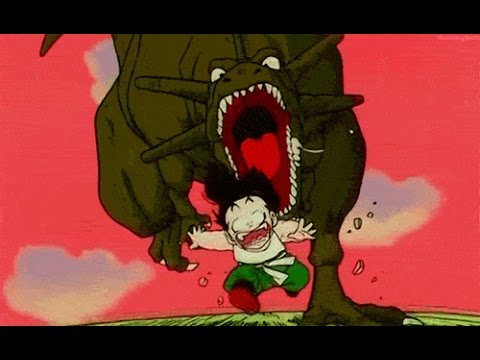
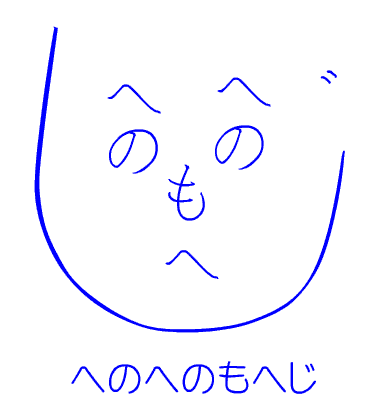



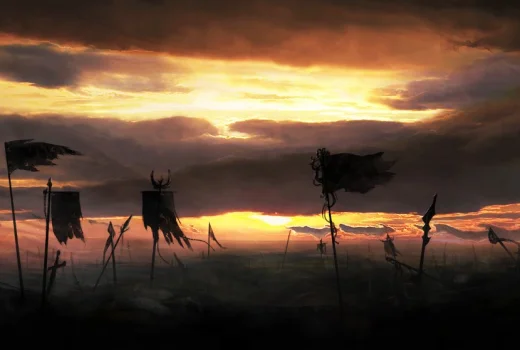










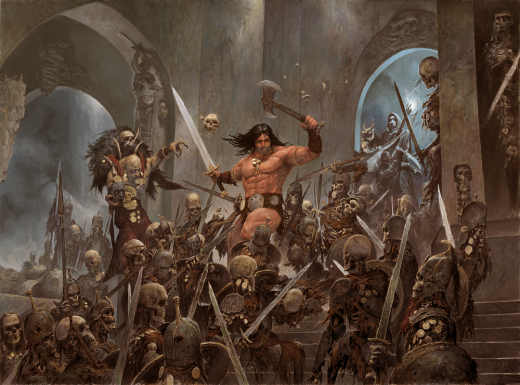


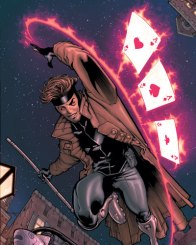


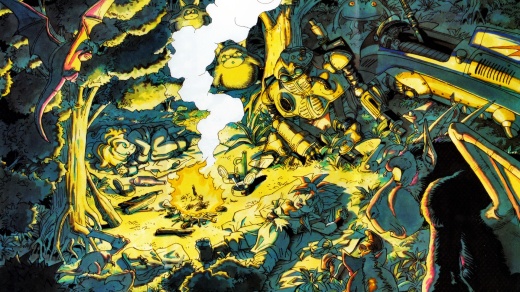
You must be logged in to post a comment.